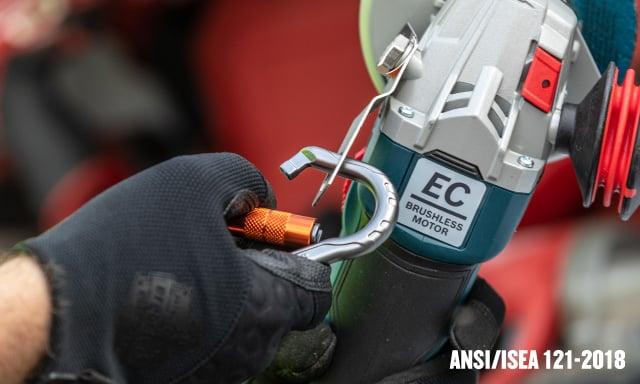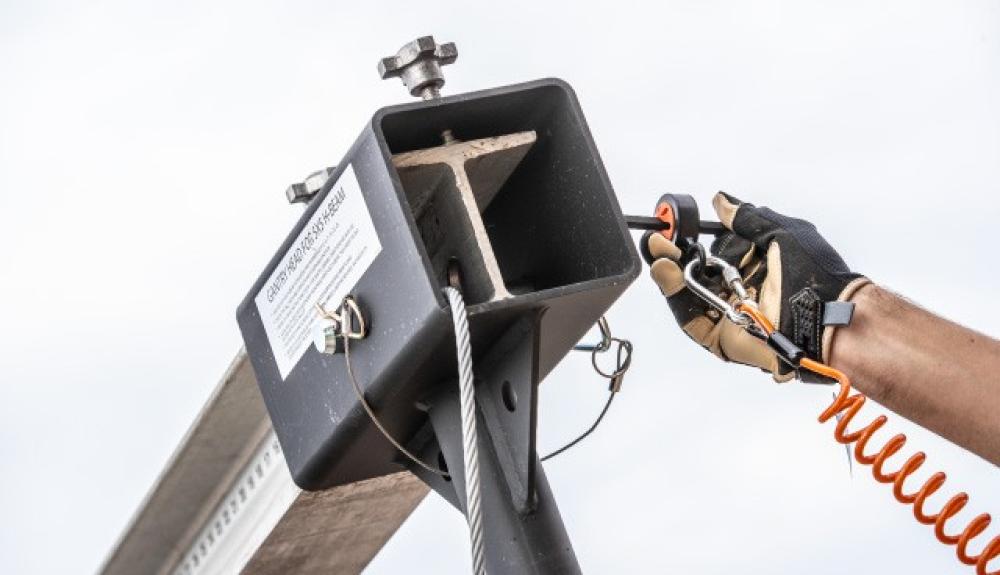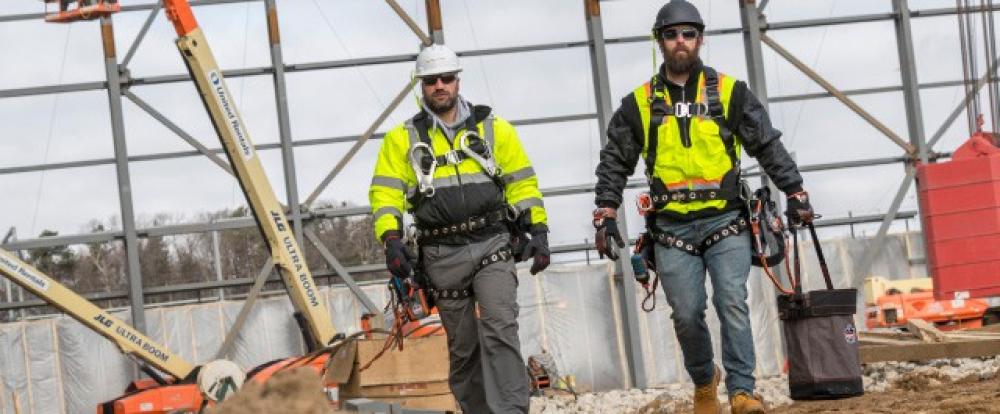ANSI/ISEA 121-2018: Five Big Facts You Need to Know

The Dropped Objects Standard has arrived – along with plenty of questions about what it all means. Here are the five most important things you absolutely positively need to know about ANSI/ISEA 121-2018.
ONE: THIS IS A STANDARD FOR TETHERING AND CONTAINER EQUIPMENT
ANSI/ISEA 121-2018 is a standard that consists of design, testing, performance and labeling requirements for tool tethering systems and containers used to transport and secure tools and equipment at heights.
The four categories of equipment covered in this standard are:
The requirements of this standard will create formal distinction of a proper tethering system compared to duct tape and string and other inferior solutions. ANSI/ISEA 121 is to dropped object prevention equipment what ANSI Z359 is to fall protection equipment. This standard DOES NOT specify proper use of this equipment for workers or specify what needs to be tethered and when it needs to be tethered.
- Proper use of the equipment is specified by the manufacturer.
- When a worker needs to tether and what they need to tether is specified by a company or a regulatory body.
TWO: THIS IS A VOLUNTARY CONSENSUS STANDARD, NOT A REGULATION (HOWEVER...)
The American National Standards Institute (ANSI) is a private non-profit organization that oversees the development of voluntary consensus standards for products in the United States. They have adopted 121, which was developed by the International Safety Equipment Association (ISEA), a group that represents manufacturers of safety equipment.
Voluntary consensus standards for safety products are the formalization of requirements for equipment, giving manufacturers guidelines for designing and testing product. These often become a way for end users to set a best practice on the job for what safety products to use.
Standards of this nature may not be directly enforceable by regulatory bodies like OSHA. HOWEVER, because these standards can become best practice, OSHA can reference ANSI and other consensus standards under the General Duty Clause or through a Letter of Interpretation to cite a company.
Learn more on the differences between ISEA, ANSI & OSHA here.

THREE: THERE MAY BE A CATCH WITH THE MEANING OF “VOLUNTARY” AND 121.
Many believe they do not have to use tool tethering systems and securing containers on the job because OSHA has not written specific requirements to do so.
While that is ture here is the catch broken down into three points:
- OSHA does require employers to address falling/dropped objects hazards on the job. They mention this both in General Industry (1910.23; 1910.28) and Construction (1926.451; 1926.501; 1926.759) standards. This establishes that OSHA does require mitigation of falling/dropped objects risk.
- Prevention > Protection: There is no argument that preventing dropped objects all together is a better practice than hard hats, canopies and ground-based safety zones. The latter can minimize damage and injury of a struck by falling object, but they do not prevent the items from falling in the first place.
- ANSI/ISEA 121 formalizes and codifies the above to two points, creating the variables of an equation for OSHA to cite under the General Duty Clause. The equipment (attachments, tethering, containers) in 121 are the solutions to the equation.
FOUR: ANSI/ISEA 121 DOES NOT HAVE AN ADOPTION CYCLE OR GRACE PERIOD.
An adoption timeframe allows manufacturers a grace period to get their product up to date with changes from previous revisions of standards, and allows end users time to gear up with new equipment if there is a requirement or regulation for a company to use ANSI-rated equipment.
Because this is the inaugural draft of 121, there is no adoption period for the standard. With no previous revisions behind it, manufacturers can release equipment as they design and test it to the standard if they wish to (remember it is voluntary, so manufacturers do not have to make equipment that meets the standard.) End users can implement the equipment when their policies require it.
FIVE: THERE WILL LIKELY BE INTERNATIONAL IMPACT
Currently there are no similar standards globally that focus on tethering and container equipment. There are regulations in places like Europe, Brasil and Australia like OSHA that do require employers to furnish a place of employment free from dropped objects hazards, but also do not specify the types of controls that must be used.
Rest assured that ANSI/ISEA 121-2018 will serve as a catalyst to launch similar efforts in other countries or regions for equipment standards to develop. Ergodyne will be on the forefront of those efforts as well.

ANSI/ISEA 121-2018: A NEW STANDARD IN AT-HEIGHTS SAFETY
From our pioneering line of Squids Equipment and Tool Lanyards + Attachments to helping craft ANSI/ISEA 121-2018 to establish design, testing and labeling requirements for dropped object prevention solutions, we’re proud to lead the way. But there’s still work to do, and it can’t be done without your help.


